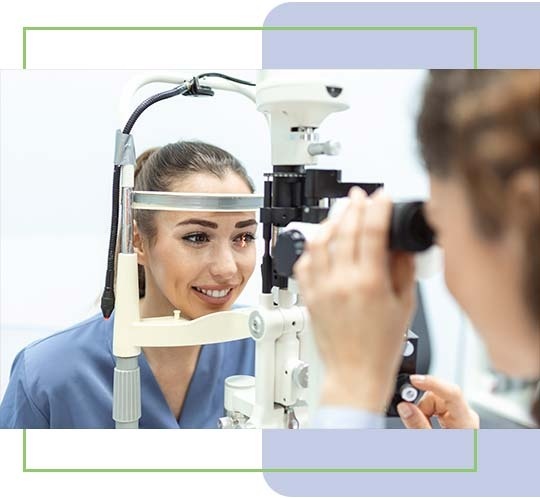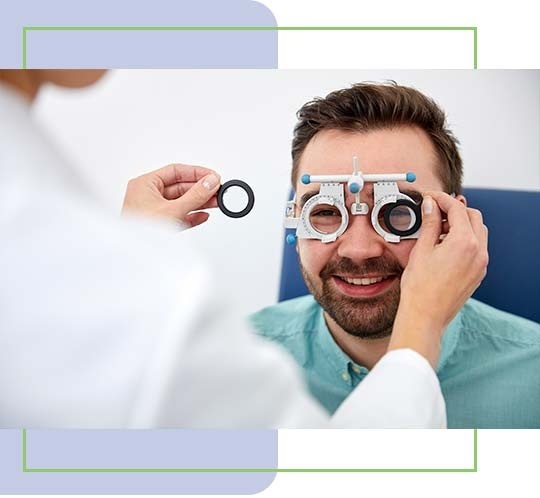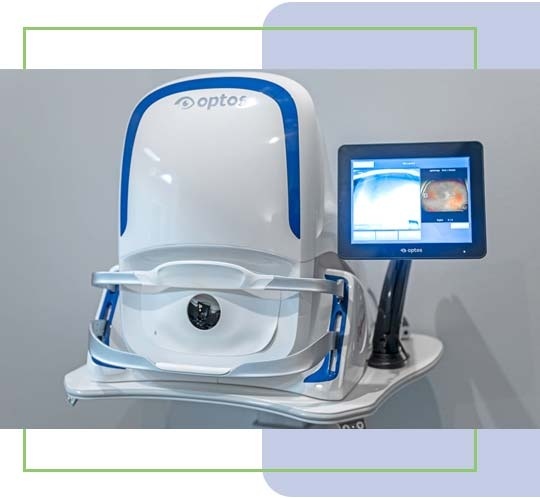Get the complete guide to choosing the right eye care provider
- Enter your info to download now!
Experience Comprehensive Markham Eye And Vision Care Services
At Opsis Eye Care, we take pride in providing comprehensive Markham Eye And Vision Care services. Our commitment is to ensure the well-being of your eyes, offering a range of specialized treatments and routine eye exams that prioritize your ocular health.
When it comes to your vision, Opsis Eye Care stands out as a reliable choice for Markham Eye And Vision Care. Our team of Optometrists in Markham is dedicated to delivering professional services. Our services cover a broad spectrum, from routine eye exams to advanced treatments for cataracts and glaucoma. With a focus on precision and personalized care, Opsis Eye Care guarantees an experience beyond expectations.
Markham Eye And Vision Care is not just a service we offer; it's our commitment to your eye health. Opsis Eye Care understands the importance of maintaining optimal vision, and our optometrists are here to guide you through every step of your eye care. Choosing Opsis Eye Care means choosing excellence in eye care. As experienced Optometrists in Markham, we blend state-of-the-art technology with a compassionate approach to ensure you receive Professional eye care.
Whether seeking routine eye checkups or addressing specific eye conditions, we are your trusted partner in achieving and maintaining clear, healthy vision.
Opsis Eye Care is a reliable clinic for Markham Eye And Vision Care services. As friendly Optometrists in Markham, we are dedicated to providing you with a clear vision for a brighter, healthier future.
Schedule Your Markham Eye And Vision Care Experience Today!
Discover the reliability of our Optometrists in Markham. Book your appointment now to receive personalized and advanced Markham Eye And Vision Care services. Your vision deserves meticulous attention– trust Opsis Eye Care for unparalleled eye health!
My experience at Opsis was perfect. Very fast, efficient and friendly I will definitely come back whenever I need any eye care to be done!
- Alex Wong


Personalized Care For Optimal Vision From Reliable Optometrists In Markham
Our committed Optometrists in Markham understand that each individual has unique vision care requirements. Therefore, our dedicated team of Eye Doctors is here to provide personalized care tailored to your distinct needs.
In the Markham Eye And Vision Care space, our Eye Doctors are committed to delivering exceptional service. Our Optometrists in Markham maintain a personalized approach beyond routine eye care.
Our journey with you begins by understanding your specific needs. Opsis Eye Care believes in a holistic approach to eye health, and through our personalized consultations, we ensure that your concerns are heard and addressed comprehensively. The aim is to provide Eye Care that aligns perfectly with your unique vision goals. Our Optometrists in Markham are dedicated to consistently offering a personalized approach to eye health. Our Eye Doctors take the time to listen, assess, and create a customized plan that caters specifically to your visual requirements.
Experience the difference with Opsis Eye Care, where our Markham Eye And Vision Care is a commitment to your optimal vision. Our personalized care is designed to make you feel
confident in your eye health journey, knowing that you are in the hands of Professional Optometrists in Markham.
Choose Opsis Eye Care for an individualized approach to eye health. Your vision deserves immediate attention, and Opsis Eye Care is here to deliver excellence in Markham Eye And Vision Care. Trust us to provide the personalized care you need for optimal vision – because at Opsis Eye Care, your eyes are our priority.
Dr. Jessica Nhan is an outstanding optometrist and person. She takes her time and genuinely cares about her patients. I drive a far distance just to see her. Her staff are also a pleasure to deal with.
- Yusuf Sham
Markham Eye And Vision Care - State-Of-The-Art Technology For Accurate Diagnosis And Treatment
Opsis Eye Care stands at the forefront of Markham Eye And Vision Care, utilizing cutting-edge technology to ensure precise diagnosis and effective treatment. As friendly Optometrists in Markham, we are committed to delivering unparalleled care by integrating state-of-the-art advancements into our diagnostic and treatment processes.
In the realm of Markham Eye And Vision Care, our commitment to excellence is reflected in the technology we employ. Our clinic boasts the latest advancements, allowing us to provide accurate diagnoses and tailored treatments for various eye conditions. At Opsis Eye Care, we believe that staying at the forefront of technological innovation is crucial for ensuring quality outcomes for our patients.

Our Optometrists in Markham recognize precision as the key to healthy eye care. Our investment in state-of-the-art technology underscores our dedication to delivering exceptional Markham Eye And Vision Care. Every aspect of our practice is geared toward achieving optimal patient results, from advanced diagnostic tools to innovative treatment modalities.
At Opsis Eye Care we are committed to utilizing the latest technology to consistently offer quality Markham Eye And Vision Care services. We always integrate the latest tech trends, ensuring our patients receive the most accurate diagnoses and effective treatments.
Choose Opsis Eye Care for a blend of experience and technology in Markham Eye And Vision Care. Our state-of-the-art approach guarantees quality care from dedicated Optometrists in Markham. Your eyes deserve the precision and innovation that Opsis Eye Care brings to every aspect of diagnosis and treatment. Trust us for accurate, cutting-edge solutions in eye care because, at Opsis Eye Care, your vision is our priority.
Experience Opsis Eye Care: Choose Experienced Optometrists in Markham!
Elevate your eye care with friendly Optometrists in Markham. Take the first step towards optimal vision by scheduling your appointment now. Our commitment to precise and
comprehensive Markham Eye And Vision Care ensures your eyes receive the attention they deserve. Book today for a vision care experience like no other!
I’ve been coming here for the last 3 or 4 years and every time is super easy and quick. The staff are very helpful and they always make sure you’re comfortable. You never want to mess with your eyes and I always feel reassured leaving knowing that they’ve covered all basis. Will always come back for testing here. Great great job Opsis Team!!
- Troy March
Opsis Eye Care serves clients across
-
Markham
-
Richmond Hill
-
North York
-
Scarborough
-
Vaughan
-
Thornhill
